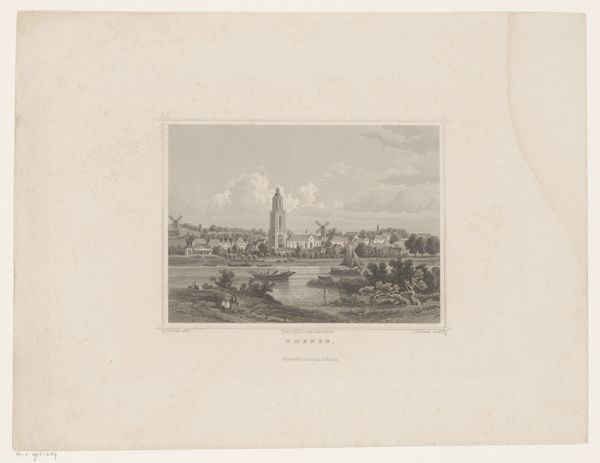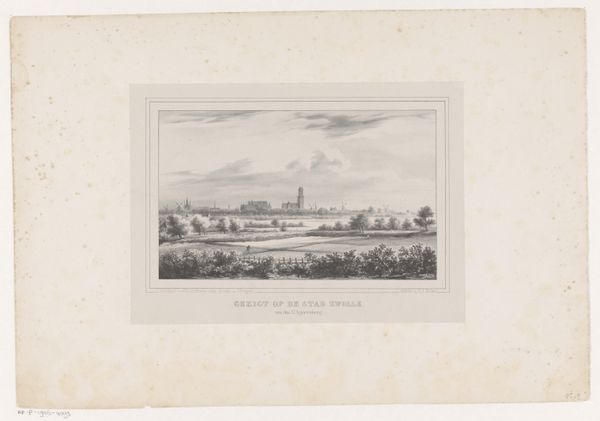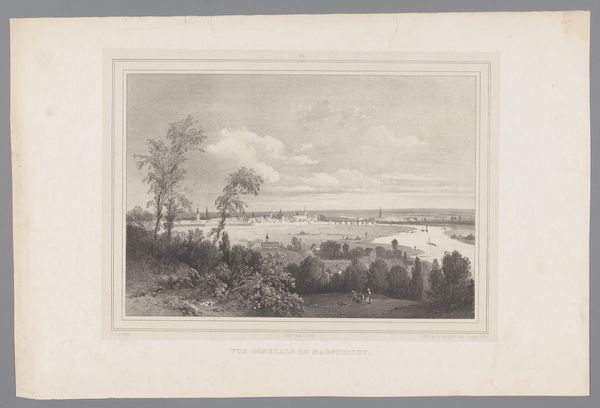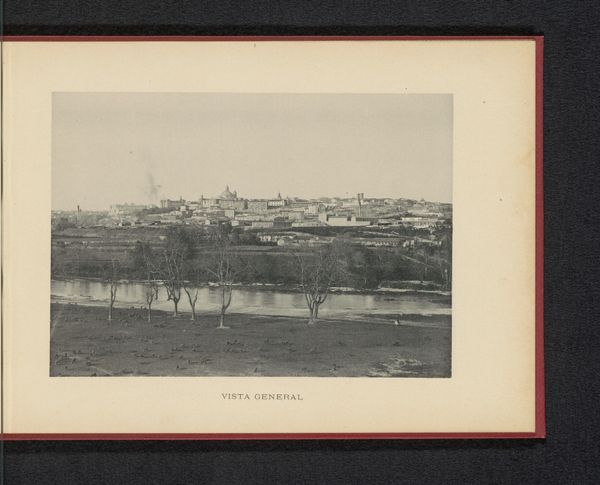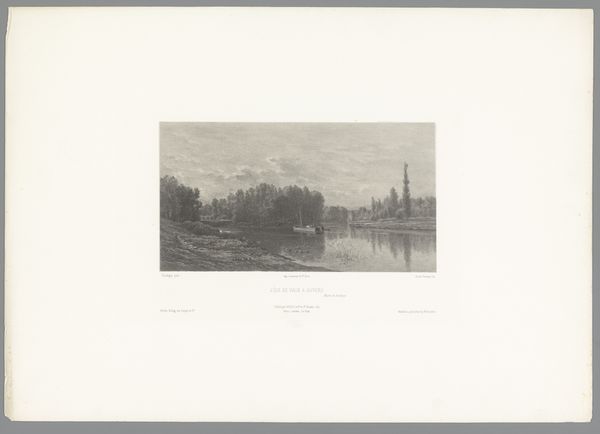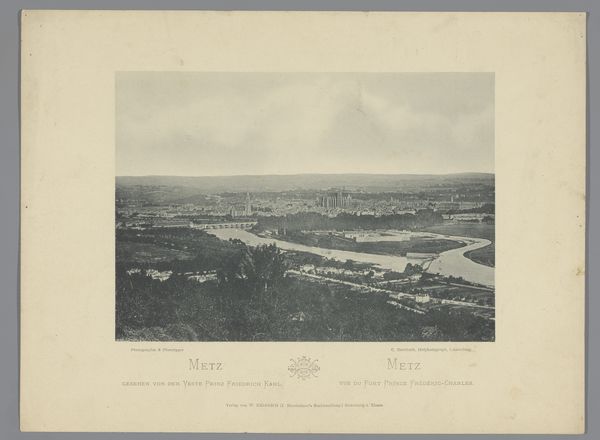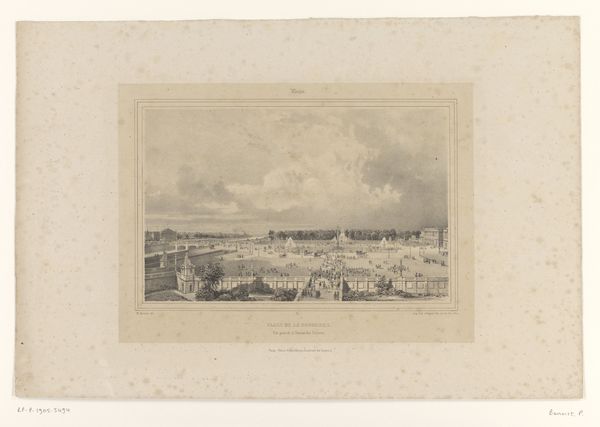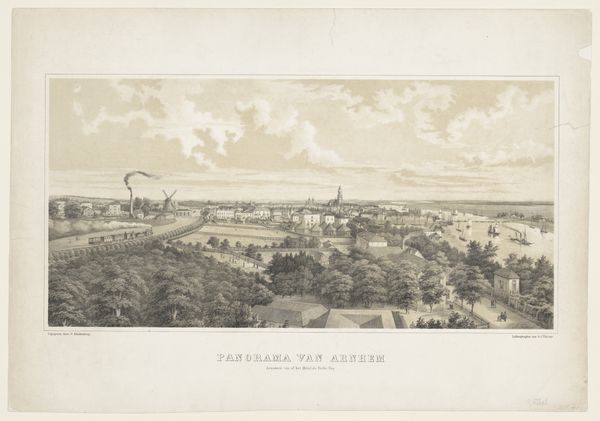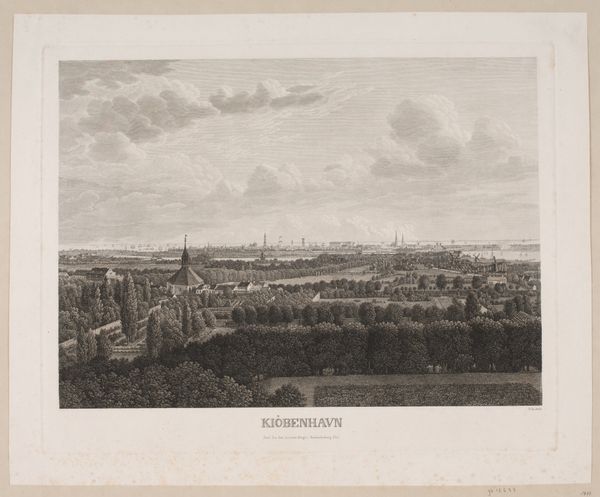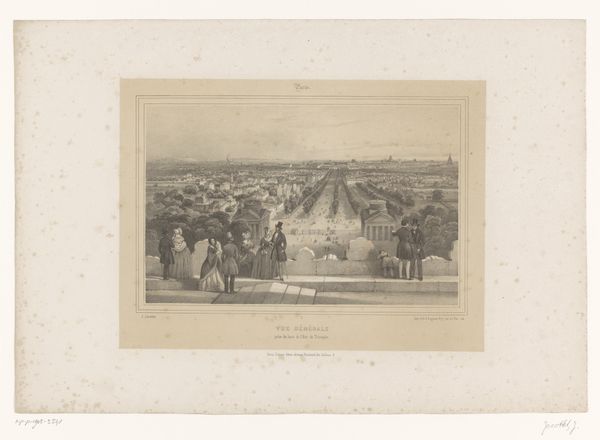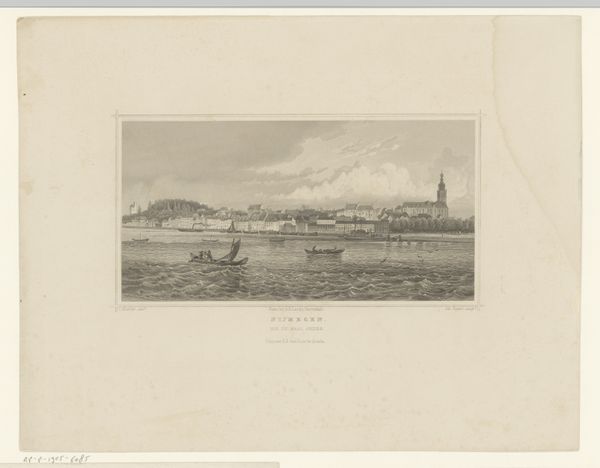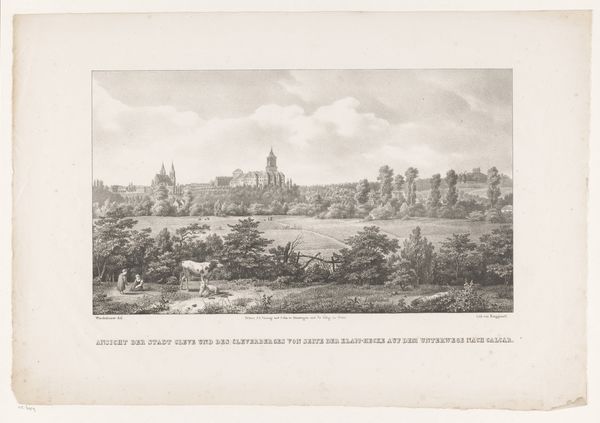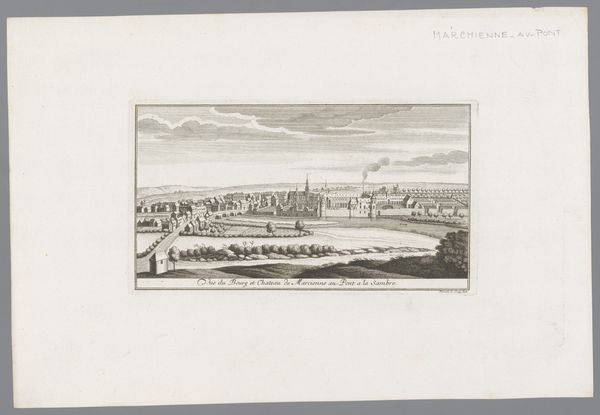
print, engraving
# print
#
landscape
#
romanticism
#
cityscape
#
academic-art
#
engraving
Dimensions: height 162 mm, width 232 mm
Copyright: Rijks Museum: Open Domain
Editor: This is "Gezicht op Hannover vanuit het zuidwesten," a print made by Ludwig Hoffmeister in 1839. The muted tones and detailed linework are quite striking, it definitely feels very representational, of a specific time and place. What can you tell me about this work? Curator: Considering this cityscape from a materialist perspective, I’m immediately drawn to the medium: engraving. Think about the labor involved, the skilled craftspeople meticulously etching lines into a metal plate, reproducing this image. It speaks volumes about 19th-century modes of production and dissemination of knowledge. The choice of depicting Hannover also suggests a rising bourgeois interest in portraying their cities, consuming these images to assert a sense of ownership and civic pride. Does it strike you as something easily reproducible or more geared toward the elite? Editor: I guess with the detailed engraving, there’s a sense of fine art involved, making it appeal to an elite class, but I see what you mean. As a print, though, the artist had the explicit goal of easily circulating and reproducing the image. What does that contradiction imply? Curator: Exactly! This tension reflects the blurring lines between high art and commodity culture that emerged during industrialization. Look closely at the depiction of labor here, and you'll see figures on horseback or strolling leisurely. Absent, tellingly, are factories or intense urban infrastructure. Is this merely a depiction, or an elision? Hoffmeister is making an aesthetic and a social choice here. What would a contemporary photograph include? Editor: I suppose that now makes the image a lens to examining the artist's choice, and, on a broader level, reveals societal values that elevate aesthetics. That reframing completely changes my first impression. Curator: Indeed! Thinking about how things are *made*, and by whom, fundamentally alters how we understand and experience art. And more broadly, understanding production can clarify what is *not* produced. It has been great hearing your thoughts on Hoffmeister! Editor: And yours! I'll certainly think differently about engravings and cityscapes in the future.
Comments
No comments
Be the first to comment and join the conversation on the ultimate creative platform.
